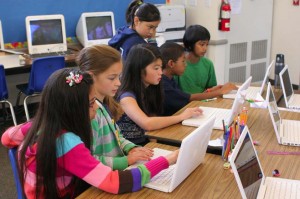Over the weekend, The New York Times published the second story in its series on "Grading the Digital School." The first story in the series questioned the massive expenditures schools make on education technology, pointing to stagnant test scores as an indication that these investments might not be worth it. Last weekend's story extends that skeptical eye to the outcomes from educational software, again questioning whether using these tools in the classroom makes much of a difference in terms of student achievement.
The story focuses on the claims made by Carnegie Learning that its math software provides "revolutionary results." But Carnegie Learning is hardly alone in the claims it makes about the effectiveness of its products. Adjectives like "revolutionary," "innovative," "feature-rich," "content-rich," "engaging," "standards-based" pepper the landscape. And much like the well-known advertising claim that "4 out of 5 dentists surveyed recommend Trident gum to their patients who chew sugarless gum," educational software frequently touts claims about the satisfaction and success of the teachers, students or administrators that use the products.
The New York Times article interrogates these claims, noting that "amid a classroom-based software boom estimated at $2.2 billion a year, debate continues to rage over the effectiveness of technology on learning and how best to measure it."
The article points to the Department of Education's What Works Clearinghouse (WWC) as a resource for school districts to use to help make better procurement decisions. As the name suggests, the What Works Clearinghouse is meant to be a "central and trusted source of scientific evidence about 'what works' in education."
The WWC covers a range of educational topics -- math, literacy, science, special education, drop-out prevention, for example -- as well as for multiple age groups and different populations, such as English-language learners. The Web site contains an interface that lets schools search for the "interventions" it wants (that is, for the educational programs, practices, or policies) -- with options to search for specific topic areas, age groups, populations, delivery method and program types. It also lets users return search results by the "effectiveness" of the programs -- in other words, positive effects, potentially positive effects, mixed results, negative effects or potentially negative effects.


